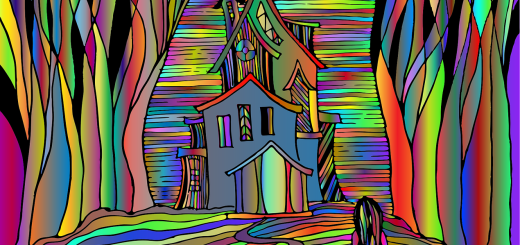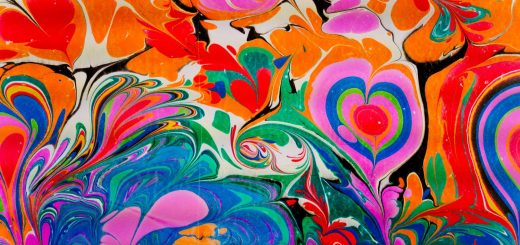The Secrets Behind Phobias: What Triggers Them?

Hey there, amazing readers! 🖐️ Just a quick note: yes, we know there are a lot of ads here. Trust us, we get it—it’s not the prettiest look, but they help us keep this blog alive and kicking. Those pesky little ads cover the costs of all the behind-the-scenes magic, from hosting and tech stuff to creating content we hope you’ll love.
We’re committed to delivering quality posts, and your support (even just sticking around despite the ads) means everything to us. So, bear with us, and thanks for helping us keep the good vibes rolling. Now, on to the fun stuff! 😉
TRANSLATE BUTTON AT THE END OF THE ARTICLE
A Quick Overview
Phobias are one of those fascinating aspects of human psychology that can baffle even the most seasoned professionals.
They’re not just simple fears; they’re intense and often irrational.
Understanding what triggers these phobias can help us not only in managing them but also in diving deeper into the intricate workings of our minds.
In this article, we’ll explore the secrets behind phobias, from their psychological roots to practical coping mechanisms.
Buckle up – it’s going to be an enlightening ride!
Understanding Phobias: A Fun Introduction to Fear
Phobias are extreme, irrational fears of specific objects, situations, or activities.
Imagine being terrified of a spider, even a tiny one, when most people would just brush it aside.
This fear can lead to avoidance behaviors that disrupt daily life.
The interesting thing about phobias is that they can arise from various sources.
They often turn everyday situations into major sources of anxiety.
Let’s break it down.
If you’re afraid of heights, just thinking about climbing a ladder might send your heart racing.
Or consider someone who avoids flying at all costs because of an overwhelming fear of planes.
Phobias are more than just fears; they have a powerful grip on our emotions and behaviors.
It’s not uncommon for someone with a phobia to go to great lengths to avoid their trigger.
I remember a friend who wouldn’t attend a picnic because she was terrified of bees.
It was amusing to watch her contort her whole schedule just to dodge a chance encounter with the buzzing insects!
Essentially, phobias can range from common fears, like fear of spiders (arachnophobia), to the more obscure, like fear of long words (hippopotomonstrosesquippedaliophobia).
Understanding that a phobia isn’t just a simple fear can foster empathy for those who struggle with them.
It’s like having a secret weight on your shoulders that others can’t see.
In this light, phobias serve as a reminder of the complexities of human emotion.
They challenge us to confront our deepest anxieties and can even offer insights into our past.
The Psychology of Phobias: How They Develop
Phobias often develop through a combination of experiences and learned behaviors.
Have you ever heard the saying, "A fear shared is a fear squared?" Well, that can be true with phobias too!
A common pathway to phobia formation is through a negative experience.
For instance, if someone has a frightening encounter with a dog, they might develop cynophobia (the fear of dogs).
Moreover, vicarious learning plays a role.
This means we can develop phobias by observing the fearful reactions of others.
If a child sees a parent scream at the sight of a snake, they might internalize that fear without ever having a direct experience.
Sometimes, there’s an element of reinforcement involved.
If avoiding a feared object results in an immediate reduction of anxiety, that behavior can become entrenched.
It’s fascinating how our minds work; they often create shortcuts.
This quick response can lead to irrational beliefs about the feared object.
Then there’s the cognitive aspect.
Individuals may develop distorted thoughts about a situation, exaggerating the danger it poses.
It’s the “catastrophizing” mindset at play.
In short, phobias can stem from a rich tapestry of experiences.
They often involve a mix of learning, emotional responses, and cognitive interpretations that can be both amusing and serious.
Common Phobias and Their Triggers Explained
Let’s delve into some of the most common phobias and what triggers them.
Understanding these can shed light on why someone reacts the way they do.
Arachnophobia: This is the fear of spiders.
The mere sight of a spider can send someone into a panic, causing them to flee the room.
Often, this fear is triggered by childhood experiences or cultural beliefs.
Acrophobia: The fear of heights is a classic one.
Walking on a balcony can feel like a heart-pounding adventure for someone with acrophobia.
Triggers usually include being in high places or even just seeing tall structures.
Claustrophobia: This is the fear of confined spaces.
Triggers can be as simple as being in an elevator or a crowded room.
For many, the thought of being trapped can amplify their anxiety.
Cynophobia: As mentioned, this is the fear of dogs.
It often arises from negative experiences with dogs in childhood, like a bite or aggressive behavior.
Aerophobia: The fear of flying can be debilitating.
Individuals may avoid air travel altogether due to the triggers associated with being in an airplane, such as turbulence or lack of control.
By understanding these triggers, we can gain insight into the experiences that shape our fears.
It’s a reminder that we’re all wired differently, and what may seem trivial to one person can be monumental for another.
The Role of Genetics in Phobia Formation
Did you know that your genetics could play a role in phobia development?
Research suggests that certain individuals may have a predisposition to anxiety disorders, including phobias, based on their family history.
Studies show that if you have a close family member with a phobia, you might be more likely to develop one yourself.
It’s not a guarantee, of course, but the correlation is intriguing.
Genetics can influence how our brains process fear.
For example, variations in certain genes related to serotonin transport and dopamine regulation can affect our responses to stress and anxiety.
Moreover, the way families communicate about fears can also be inherited.
If a family often discusses their phobias openly or displays fear in certain situations, children may pick up these cues.
So, if your Uncle Joe is terrified of snakes, there might be more at play than just a bad experience during his childhood.
It could be a combination of biological factors and learned behaviors.
All this to say, genetics adds a layer of complexity to our understanding of phobias.
While our environment and experiences shape us, our genetic predispositions can create a fascinating interplay.
Environmental Factors: Where Phobias Come From
Your environment can significantly influence the development of phobias.
Let’s take a closer look at how our surroundings can shape our fears.
Cultural Influences: Different cultures have various fears associated with specific animals or situations.
For example, some cultures might instill a fear of snakes, while others may not.
This cultural backdrop can affect how we perceive fear.
Childhood Environment: The environment we grow up in plays a key role.
Children raised in highly anxious households may be more likely to develop phobias.
If parents exhibit intense fears, children might mimic those behaviors.
Traumatic Events: A single traumatic experience can lead to the development of a phobia.
For example, if someone witnesses a terrible car accident, they might develop a fear of driving.
Social Influences: Friends and peers can also impact our fears.
If a group of friends shows fear toward a certain animal, you might start feeling anxious about it too!
Media Exposure: Movies and news reports can sensationalize certain fears.
If someone watches a horror movie featuring spiders, they might become more susceptible to developing arachnophobia.
The environment truly shapes how we view and react to the world around us.
It’s a reminder that our experiences are interconnected and can influence our emotional responses.
Childhood Experiences: Seeds of Fears Grown
Childhood experiences are often at the core of phobia development.
As kids, we’re like sponges, absorbing everything around us.
A single encounter can leave a lasting impression.
For instance, if a child is bitten by a dog, they might develop a deep-seated fear of not just dogs but all animals.
The memory of that bite can trigger anxiety at the mere sight of a pet.
Even innocuous situations can spark fears.
Imagine a child who stumbles during a school play.
They might develop a phobia of public speaking, convinced that everyone will laugh at them.
The influence of parental figures is also crucial.
If a parent shows anxiety in certain situations, children may mirror that behavior.
It’s the "monkey see, monkey do" effect in action.
Additionally, teasing or bullying can plant the seeds for phobias.
A child who is ridiculed for being afraid of the dark might become increasingly anxious about it, leading to a full-blown phobia.
Childhood experiences shape not only our fears but also our coping mechanisms later in life.
It’s a reminder that the roots of our anxieties may trace back to seemingly small moments from our past.
The Brain’s Response: Why Do We Fear?
Understanding the brain’s response to fear is like peering into the control center of our emotions.
When confronted with a trigger, the amygdala springs into action – think of it as the fire alarm of the brain.
Fight or Flight Response: When the amygdala detects a threat, it activates the fight or flight response, preparing the body to react.
This can lead to increased heart rate, rapid breathing, and heightened senses.
Memory and Fear: The hippocampus, which is responsible for memory, plays a role in how we process fear.
It helps contextualize the threat, distinguishing between real danger and perceived danger.
Chemical Reactions: Neurotransmitters like adrenaline and cortisol flood our system during fearful moments.
This can lead to the feelings of anxiety or panic that accompany phobias.
Conditioning Mechanism: The brain can learn to associate certain stimuli with fear.
If a child associates the sound of thunder (stimulus) with a frightening storm (fearful event), they might develop a phobia of thunderstorms (astraphobia).
Cognitive Distortions: Often, our thoughts can spiral out of control.
The brain may exaggerate the threat level, making it seem much worse than it is.
This is where that “catastrophizing” mindset kicks in.
Understanding the brain’s inner workings demystifies the emotional turmoil that accompanies phobias.
It sheds light on why our bodies and minds react the way they do in the face of fear.
Coping Mechanisms: How to Tackle Phobias
If you or someone you know is dealing with a phobia, it’s crucial to adopt effective coping mechanisms.
Here are some practical strategies to consider:
Gradual Exposure: Gradually facing your fear can help desensitize you.
Start small, maybe by looking at pictures of the feared object, and work your way up to facing it in real life.
Breathing Techniques: Practicing deep breathing can help you calm your nerves.
When those panic feelings kick in, take a few slow, deep breaths to reset your body’s response.
Mindfulness and Meditation: Engaging in mindfulness practices can ground you in the present moment, reducing anxious thoughts and allowing you to enjoy life without fear dictating your actions.
Cognitive Behavioral Therapy (CBT): This therapeutic approach can help you change negative thought patterns associated with your phobia.
A skilled therapist can guide you through this process.
Support Systems: Talking to friends or family about your phobia can create a support network.
Sharing your feelings can lighten the load and remind you that you’re not alone.
Journaling: Write down your experiences and feelings associated with your phobia.
This can help you process emotions and track any triggers.
Professional Help: If phobias are severely impacting your quality of life, don’t hesitate to seek help from a mental health professional.
They’re equipped with tools to support your journey toward recovery.
Remember, everyone’s journey with phobias is unique.
What works for one person may not work for another.
The key is finding the right path for you.
Phobias vs. Fears: Knowing the Difference
Understanding the difference between phobias and regular fears is essential.
Fears are common and often rational, while phobias take things to a whole new level.
Intensity: Fears are usually manageable; they might cause discomfort but don’t typically interfere with daily life.
Phobias, on the other hand, can lead to significant distress and avoidance behaviors.
Duration: Fears might be temporary or situation-specific, while phobias are persistent and can last for months or even years.
Response: When faced with a fear, most people can reason with themselves.
However, phobias can trigger overwhelming anxiety, making it hard to think logically.
Impact on Life: Fears often don’t affect one’s ability to function.
Phobias can lead to avoidance of certain situations, limiting social interactions or career opportunities.
Physical Reactions: Phobias often come with physical symptoms such as panic attacks, sweating, and heart palpitations, whereas fears might only lead to mild discomfort.
Knowing these distinctions can help individuals better understand their emotional responses and decide on the best course of action.
Fun Facts: Famous Phobias Through History
Phobias have permeated history, with many notable figures known for their unusual fears.
Let’s take a light-hearted look at some of them:
Napoleon Bonaparte: This iconic leader was reportedly afraid of cats.
His fear of felines is so famous that it’s been documented in various historical texts.
Albert Einstein: Surprisingly, the genius himself had a phobia of public speaking.
Despite his intelligence, he preferred to stay out of the spotlight.
Agoraphobia: The fear of open spaces has been documented for centuries.
Many famous artists and writers struggled with it, often choosing isolation to create their masterpieces.
Zeus: According to Greek mythology, even the mighty Zeus had a fear of the goddess of discord, Eris.
This fear led to his decision to keep her away from his gatherings.
Arachne: In Greek folklore, Arachne, a talented weaver, was turned into a spider by Athena.
This has led to a cultural aversion to spiders that continues to this day.
These fun facts remind us that phobias are not just personal struggles but have found their way into our history and culture.
They provide us with a light-hearted perspective on something that can often be serious.
Overcoming Phobias: Tips for a Brighter Future
Overcoming a phobia doesn’t happen overnight.
It’s a journey filled with ups and downs.
Here are some tips to help light the way:
Acknowledge Your Fear: Acceptance is the first step.
Recognizing that you have a phobia is crucial in beginning the healing process.
Educate Yourself: Knowledge is power!
Understanding your phobia can help demystify it and reduce its power over you.
Set Realistic Goals: Break down your journey into small, achievable steps.
Celebrate each victory, no matter how small.
Keep a Positive Mindset: Surround yourself with positivity.
Engage in activities that make you happy and remind you of your strengths.
Practice Self-Compassion: Be kind to yourself on this journey.
Phobias can be challenging, but it’s important to remember that you’re doing your best.
Incorporate Healthy Habits: Engage in regular physical activity, eat well, and ensure you’re getting enough sleep.
A healthy lifestyle can bolster resilience against anxiety.
Stay Connected: Reach out to friends, family, or support groups.
Sharing your experiences can provide comfort and encouragement.
Consider Professional Support: If your phobia feels overwhelming, don’t hesitate to seek help from a therapist who specializes in anxiety disorders.
Remember, overcoming a phobia is a gradual process.
Be patient with yourself and take one step at a time!
Seeking Help: When to Consult a Professional
If you find that your phobia is impacting your daily life, it might be time to seek professional help.
Here are some signs that it’s time to talk to someone:
Disruption of Daily Life: If your phobia is causing significant disruption in your work, social life, or daily activities, it’s time to consult a professional.
Increased Anxiety: If you notice that your anxiety levels are escalating, or if you’re experiencing panic attacks, it’s best to seek guidance.
Avoidance Behavior: If you’re going out of your way to avoid your phobia at all costs, a therapist can help you address this behavior.
Physical Symptoms: If your phobia triggers physical symptoms that are distressing, it’s worth discussing with a healthcare professional.
Difficulty Coping: If you’re struggling to cope with your feelings or if your coping strategies aren’t working, reaching out for help can make a world of difference.
Seeking help isn’t a sign of weakness; it’s a courageous step toward taking control of your life.
Professionals can provide valuable tools and support to help you navigate your journey.
Conclusion
Phobias are complex, fascinating facets of human psychology.
They arise from a mix of genetics, environmental factors, childhood experiences, and the brain’s responses.
Understanding what triggers these fears can empower us to confront them, leading to a brighter future.
Whether it’s the fear of heights, spiders, or public speaking, remember that you’re not alone in this journey.
With the right coping mechanisms and support, overcoming phobias is possible.
So, let’s embrace our fears with open arms, armed with knowledge and understanding.
After all, it’s not about eliminating fear but learning how to dance with it!

The Enlightenment Journey is a remarkable collection of writings authored by a distinguished group of experts in the fields of spirituality, new age, and esoteric knowledge.
This anthology features a diverse assembly of well-experienced authors who bring their profound insights and credible perspectives to the forefront.
Each contributor possesses a wealth of knowledge and wisdom, making them authorities in their respective domains.
Together, they offer readers a transformative journey into the realms of spiritual growth, self-discovery, and esoteric enlightenment.
The Enlightenment Journey is a testament to the collective expertise of these luminaries, providing readers with a rich tapestry of ideas and information to illuminate their spiritual path.
Our Diverse Expertise 🌟
While our primary focus is on spirituality and esotericism, we are equally passionate about exploring a wide range of other topics and niches 🌍📚. Our experienced team is dedicated to delivering high-quality, informative content across various subjects ✨.
To ensure we provide the most accurate and valuable insights, we collaborate with trusted experts in their respective domains 🧑🏫👩🏫. This allows us to offer well-rounded perspectives and knowledge to our readers.
Our blog originally focused on spirituality and metaphysics, but we’ve since expanded to cover a wide range of niches. Don’t worry—we continue to publish a lot of articles on spirituality! Frequently visit our blog to explore our diverse content and stay tuned for more insightful reads.







